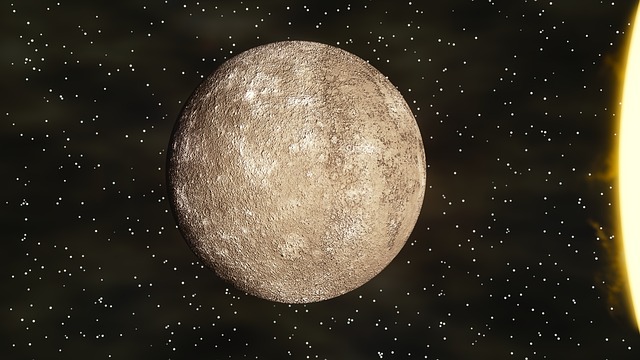Mercury is one of the smallest planets in our solar system, and also the closest planet to the sun. It is the first planet in the solar system and the first from the sun, named after the Roman messenger god, Mercury.
It is a fascinating planet that has intrigued scientists and astronomers for many years. In this article, we discuss the characteristics, composition, and exploration of Mercury.
Characteristics of Mercury:
Mercury has a diameter of 4,880 km, making it the smallest planet in our solar system. It is only slightly larger than the Earth’s moon. It orbits the sun at a distance of about 57.9 million km and completes one rotation on its axis in approximately 59 Earth days.
Its orbit is highly elliptical, which means its distance from the sun varies between 46 million km at its closest and 70 million km at its farthest.
Because it is so close to the sun, Mercury is very hot, with an average surface temperature of 427°C. At this temperature, metals such as lead would melt! At the same time, the planet has no atmosphere to help distribute the heat, and as such, there are extreme temperature fluctuations between its day and night sides. During the day, its surface can reach up to 800 degrees Fahrenheit, while at night, the temperature can dip down to -290 degrees Fahrenheit.
Composition of Mercury:
Mercury is mainly composed of metal and rock, with a density of 5.427 g/cm3. It has no atmosphere, and its surface is heavily cratered, much like our moon.
The lack of an atmosphere means that the planet is constantly bombarded by solar radiation and small meteoroids. The craters on Mercury are the result of these collisions, which have occurred over billions of years.
Because of its high density, scientists believe that Mercury has a significant metallic core, which makes up about 60% of its mass. This core is believed to be responsible for its magnetic field, which is much weaker than Earth’s but still exists. The magnetic field on Mercury is believed to be generated by the movement of the liquid iron-nickel core.
Exploration of Mercury:
Despite its proximity to Earth and its scientific significance, Mercury has only been visited by two spacecraft so far, both of which were launched by NASA.
The first mission to Mercury was Mariner 10, which was launched in 1973. Mariner 10 made three flybys of the planet in 1974 and 1975, capturing the first close-up images of Mercury. These images revealed a heavily cratered surface and gave scientists valuable information about the planet’s composition and atmosphere.
In 2011, NASA launched the Messenger spacecraft, which orbited Mercury for four years, from 2011 to 2015. During its orbit, Messenger was able to capture high-resolution images of the planet’s surface, giving scientists a better understanding of its geology and surface features.
Messenger also measured the planet’s magnetic field, detected sulfur in its atmosphere, and confirmed the presence of water ice in the polar regions.
In 2018, the ESA-JAXA joint mission BepiColombo was launched to this planet. The spacecraft is designed to study the planet’s composition, geology, atmosphere, and magnetic field in detail.
BepiColombo consists of two orbiters, one from the European Space Agency (ESA) and the other from the Japan Aerospace Exploration Agency (JAXA). The mission will take seven years to reach Mercury, and once it does, it will spend one year in orbit, studying the planet.
Conclusion:
In conclusion, Mercury is a fascinating planet that has much to offer scientists and astronomers. Its proximity to the sun, heavily cratered surface, and unique composition make it an intriguing place to study.
While we have already learned a lot about the planet from previous missions, there is still much to be discovered. The BepiColombo mission will no doubt reveal new insights about this mysterious planet and further our understanding of our solar system.

